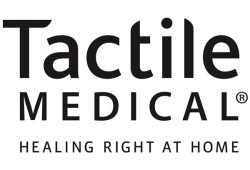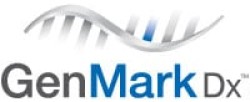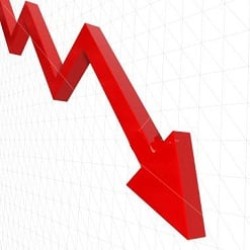Tactile Systems Technology (NASDAQ: TCMD) and GenMark Diagnostics (NASDAQ:GNMK) are both small-cap medical companies, but which is the superior stock? We will compare the two companies based on the strength of their profitability, valuation, risk, analyst recommendations, earnings, dividends and institutional ownership.
Profitability
Get Tactile Systems Technology alerts:This table compares Tactile Systems Technology and GenMark Diagnostics’ net margins, return on equity and return on assets.
| Net Margins | Return on Equity | Return on Assets | |
| Tactile Systems Technology | 6.29% | 7.86% | 6.56% |
| GenMark Diagnostics | -97.90% | -77.35% | -46.77% |
Institutional & Insider Ownership
92.1% of Tactile Systems Technology shares are held by institutional investors. 8.7% of Tactile Systems Technology shares are held by insiders. Comparatively, 7.5% of GenMark Diagnostics shares are held by insiders. Strong institutional ownership is an indication that large money managers, endowments and hedge funds believe a company will outperform the market over the long term.
Valuation and Earnings
This table compares Tactile Systems Technology and GenMark Diagnostics’ top-line revenue, earnings per share (EPS) and valuation.
| Gross Revenue | Price/Sales Ratio | Net Income | Earnings Per Share | Price/Earnings Ratio | |
| Tactile Systems Technology | $109.28 million | 9.19 | $5.85 million | $0.21 | 264.76 |
| GenMark Diagnostics | $52.52 million | 7.12 | -$61.85 million | ($1.21) | -5.58 |
Tactile Systems Technology has higher revenue and earnings than GenMark Diagnostics. GenMark Diagnostics is trading at a lower price-to-earnings ratio than Tactile Systems Technology, indicating that it is currently the more affordable of the two stocks.
Volatility & Risk
Tactile Systems Technology has a beta of 0.86, suggesting that its share price is 14% less volatile than the S&P 500. Comparatively, GenMark Diagnostics has a beta of 0.47, suggesting that its share price is 53% less volatile than the S&P 500.
Analyst Recommendations
This is a summary of current recommendations for Tactile Systems Technology and GenMark Diagnostics, as reported by MarketBeat.com.
| Sell Ratings | Hold Ratings | Buy Ratings | Strong Buy Ratings | Rating Score | |
| Tactile Systems Technology | 1 | 2 | 3 | 0 | 2.33 |
| GenMark Diagnostics | 0 | 1 | 5 | 0 | 2.83 |
Tactile Systems Technology currently has a consensus price target of $47.88, suggesting a potential downside of 13.89%. GenMark Diagnostics has a consensus price target of $10.80, suggesting a potential upside of 60.00%. Given GenMark Diagnostics’ stronger consensus rating and higher probable upside, analysts clearly believe GenMark Diagnostics is more favorable than Tactile Systems Technology.
Summary
Tactile Systems Technology beats GenMark Diagnostics on 11 of the 14 factors compared between the two stocks.
Tactile Systems Technology Company Profile
 Tactile Systems Technology, Inc., a medical technology company, develops and provides medical devices for the treatment of chronic diseases in the United States. The company offers proprietary Flexitouch system, an at-home solution for lymphedema patients; and ACTitouch system, a home-based solution for chronic venous insufficiency patients. It also provides Entr茅 System, a basic pneumatic compression device that is used for the at-home treatment of venous disorders, such as lymphedema and chronic venous insufficiency, including venous leg ulcers. The company was founded in 1995 and is headquartered in Minneapolis, Minnesota.
Tactile Systems Technology, Inc., a medical technology company, develops and provides medical devices for the treatment of chronic diseases in the United States. The company offers proprietary Flexitouch system, an at-home solution for lymphedema patients; and ACTitouch system, a home-based solution for chronic venous insufficiency patients. It also provides Entr茅 System, a basic pneumatic compression device that is used for the at-home treatment of venous disorders, such as lymphedema and chronic venous insufficiency, including venous leg ulcers. The company was founded in 1995 and is headquartered in Minneapolis, Minnesota.
GenMark Diagnostics Company Profile
 GenMark Diagnostics, Inc., a molecular diagnostics company, develops and commercializes molecular tests based on its proprietary eSensor electrochemical detection technology. It provides ePlex instrument and respiratory pathogen panel, which integrates automated nucleic acid extraction and amplification with its eSensor detection technology to enable operators using ePlex system to place patient sample directly into its test cartridge and obtain results. The company offers XT-8 instrument, and related diagnostic and research tests, as well as certain custom manufactured reagents that enable reference laboratories and hospitals to support a range of molecular tests with a workstation and disposable test cartridges. It also provides diagnostic tests for use with its XT-8 system that includes respiratory viral panel, cystic fibrosis genotyping test, thrombophilia risk test, a warfarin sensitivity test, and hepatitis C virus genotyping test and associated custom manufactured reagents, as well as 2C19 genotyping test. The company sells its products through direct sales and technically specialized service organization in the United States and Europe. GenMark Diagnostics, Inc. is headquartered in Carlsbad, California.
GenMark Diagnostics, Inc., a molecular diagnostics company, develops and commercializes molecular tests based on its proprietary eSensor electrochemical detection technology. It provides ePlex instrument and respiratory pathogen panel, which integrates automated nucleic acid extraction and amplification with its eSensor detection technology to enable operators using ePlex system to place patient sample directly into its test cartridge and obtain results. The company offers XT-8 instrument, and related diagnostic and research tests, as well as certain custom manufactured reagents that enable reference laboratories and hospitals to support a range of molecular tests with a workstation and disposable test cartridges. It also provides diagnostic tests for use with its XT-8 system that includes respiratory viral panel, cystic fibrosis genotyping test, thrombophilia risk test, a warfarin sensitivity test, and hepatitis C virus genotyping test and associated custom manufactured reagents, as well as 2C19 genotyping test. The company sells its products through direct sales and technically specialized service organization in the United States and Europe. GenMark Diagnostics, Inc. is headquartered in Carlsbad, California.
 24/7 Wall St.
24/7 Wall St. ValuEngine downgraded shares of Vina Concha y Toro (NYSE:VCO) from a buy rating to a hold rating in a research report released on Wednesday.
ValuEngine downgraded shares of Vina Concha y Toro (NYSE:VCO) from a buy rating to a hold rating in a research report released on Wednesday.